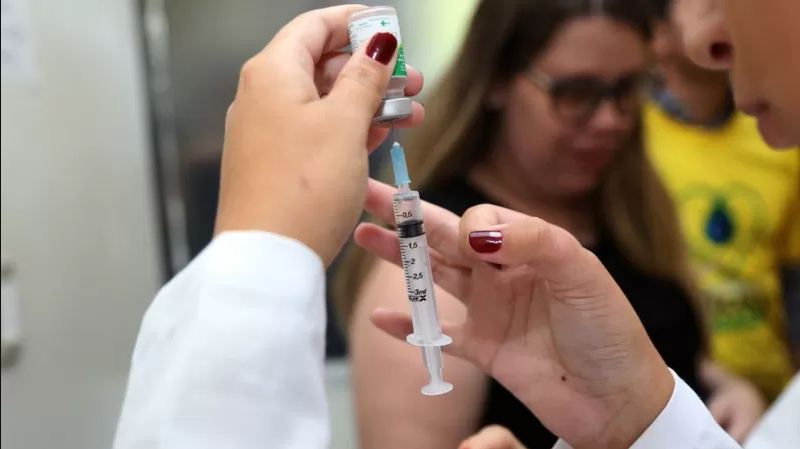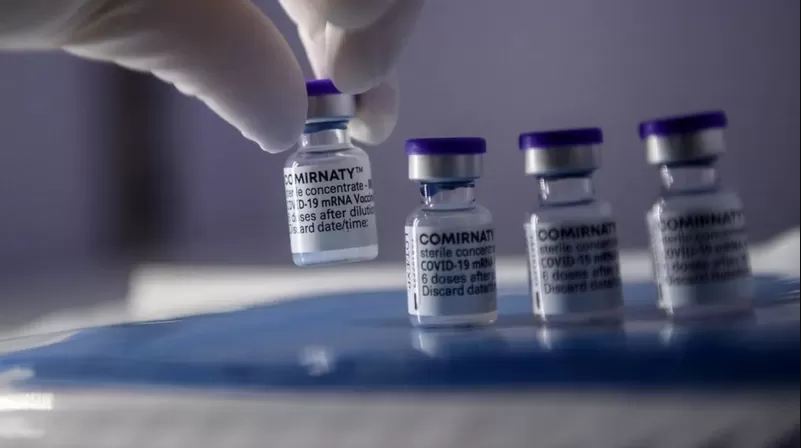Covid: When will the next generation vaccines come to protect us?
- July 21, 2022
- 0
In practice, the process of updating doses is more complicated than first thought / GETTY IMAGES A year and a half after the first doses were given, covid-19
In practice, the process of updating doses is more complicated than first thought / GETTY IMAGES A year and a half after the first doses were given, covid-19


A year and a half after the first doses were given, covid-19 vaccines need to be updated to combat omicron sub-variants like BA.1. BA. 4 and BA. 5.
It is expected to be available between September and October 2022, as planned by drug and pharmaceutical regulators such as Moderna and Pfizer, both already approved and scheduled by vaccine manufacturers that are used on a large scale in many parts of the world.
“It is highly recommended and necessary that we have new vaccines,” says Renato Kfouri, a pediatrician and infection specialist, director of the Brazilian Society of Immunization.
In practice, the process of updating doses is more complex than originally thought.
The main hurdle was the rapid and unpredictable emergence of new variants of Sars-Cov-2, the coronavirus responsible for the current pandemic, over the past year. For example, the emergence of delta had already become a problem as researchers tried to develop a vaccine to combat alpha and beta variants.
The good news is that the vaccines currently available, administered in three or four doses, depending on age group and health conditions, continue to protect against the most serious forms of covid associated with hospitalization, intubation and death.
The BBC spoke to experts to understand the setbacks and possible solutions to increase people’s protection against covid-19 in the future.
In December 2020, with the first vaccines about to be ready, one of the most circulated information concerned the ultimate ease of updating doses.
“At first we were told that this process would be very rapid, that new vaccines would be available in about 20 days,” recalls Denise Garrett, a physician and epidemiologist, vice president of the Sabin Vaccine Institute in the United States.
“As time passed, we found that it wasn’t quite like that.”
The process of making changes to the original formulation is not that complicated. In mRNA vaccines such as those from Pfier and Moderna, or viral vector vaccines such as those from AstraZeneca and Janssen, it is sufficient to change the gene sequence that “teaches” our own body to produce protein S. -like shape that sits on the surface of the coronavirus and binds to cell receptors to initiate infection.

It should be noted that the first generation vaccines were developed from the “original” virus detected in Wuhan (China) at the end of 2019.
The spike (protein S) is the part of the virus that undergoes the most genetic mutations as new variants emerge.
The process of “editing” the gene sequence in a vaccine is simple and can be done in the laboratory in a matter of days.
But it is precisely at the next stage where the biggest obstacles arise.
“Modified vaccines must undergo clinical trials to see if they work, whether they cause an immune response and are equally safe,” explains physician Sue Ann Costa Clemens, director of the Oxford-Brazil Vaccine Group in the UK.
“If all these results are satisfactory, we would enter the regulatory phase where countries analyze the data and decide whether vaccines will be ready for use,” adds the expert, who is also president of the University of Global Health Institute. Siena, Italy.
At best, if the process is done quickly, it will take at least a few months to complete. That’s not counting the time it takes to produce and distribute millions of doses of the product.
The main point is that the coronavirus works at a completely different pace: since the emergence of the omicron variant at the end of 2021, several sub-variants have emerged within a few months, with further infection and the ability to evade the immune response. .
Only in the first half of 2022, the world BA.1 (first omicron subvariant) was followed by the BA.2 subvariant and more recently the dominant BA.4 and BA.5 subvariants.

Adding to this loophole, the new versions seem to have a better ability to evade the immune response from vaccination and previous covid infections. In fact, the number of people who are reinfected for the second or third time is increasing every day.
But what will come next? What about the future variant or sub-variant to worry about? Nobody knows the answer.
We have both a short-term and a long-term problem. In the coming months, regulators and pharmaceutical companies should discuss how to speed up this testing and approval process to broaden the immunity of those most susceptible to the effects of covid-19.
In this direction, the US Food and Drug Administration (FDA) seems to have taken the first step.
At the end of June, agency representatives will confirm that starting in the fall (end of September for the northern hemisphere) the booster doses to be used in that country, preferably BA.4 and BA.5.
Before this announcement, pharmaceutical companies were working to update their products. Moderna, for example, announced that it is testing a vaccine that could protect against the “original” coronavirus, as well as the BA.1 subvariant.
The latest results, published by the company and not yet reviewed by independent researchers, show that the new version of the vaccine doubles the production of neutralizing antibodies to BA.1 compared to older doses.

Pfizer is also making progress on an updated BA.1 vaccine, and initial data the company has shared also show an increased immune response.
The two labs say they are working on specific formulations to extend protection against the BA.4 and BA.5 subvariants. In this case, this is still at an early stage and it may take some time before previous results see the light.
No matter how this process unfolds in the coming months, there is a consensus on finding a way to reduce the virus’s advantage in this race so that the doses used in the next vaccination campaigns will be closer together. variant in circulation at the time.
“What we need is for the coronavirus vaccine to be something similar to what we have now for flu, where health officials analyze and identify strains that are likely to circulate more heavily each season,” Garrett said.
“From then on, it will be possible to produce vaccines without the need for longer clinical trials and with the full regulatory approval process,” he adds.
However, for this scenario to happen, the circulation of coronavirus will need to stabilize.
“We are facing an unpredictable scenario where we still cannot predict which variant will be released in the coming months,” Kfouri analyzes.
Experts understand that the use of bivalent vaccines that protect against the “original” virus, as well as the omicron variant, as recommended by pharmaceutical companies, can help solve the problem in the short term. However, the future of vaccination is bound to pass through more comprehensive solutions.
“We have to change our strategy. There’s no benefit in adapting vaccines to every new strain that emerges,” says Clemens, senior consultant at the Bill & Melinda Gates Foundation.
“We need to develop solutions that can protect ourselves not only from Sars-CoV-2, but from the entire coronavirus family, which has the potential to cause other pandemics in the future,” the researcher adds.

These projects, involving technologies such as nanoparticle vaccines or nasal solutions, are still at a very early stage and more robust results will not be seen for another year or two.
Garrett talks about the need to invest heavily in this type of research. “Creating a vaccine is a very high-risk business. The chance of someone who works well and is approved is around 7% on average,” he calculates.
“Governments need to invest heavily in pharmaceutical companies as we are talking about something very risky and very expensive. Because without incentives, these companies will not take risks on their own.”
To get an idea, the US government has invested $18,000 million in Operation Warp Speed, which laid the foundation for the development of vaccines and treatments against covid-19 and helped create vaccines from Janssen, AstraZeneca and Modern.
Until all these ideas become reality, it is important to follow the instructions of health authorities and be up-to-date on vaccination.
After all, as mentioned above, the doses we currently have continue to protect against the most serious symptoms in most cases, which can lead to hospitalization, intubation and even death.
Source: El Nacional
Alice Smith is a seasoned journalist and writer for Div Bracket. She has a keen sense of what’s important and is always on top of the latest trends. Alice provides in-depth coverage of the most talked-about news stories, delivering insightful and thought-provoking articles that keep her readers informed and engaged.